Why do dieffenbachia leaves turn yellow?
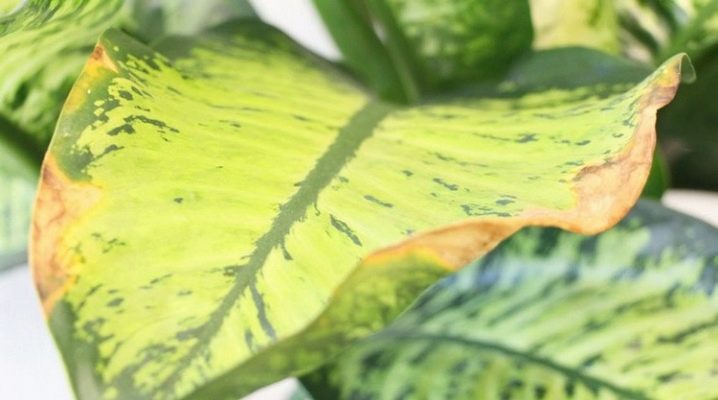
Dieffenbachia is one of the most common indoor plants. This is a large, beautiful, but at the same time absolutely unpretentious green pet in care. However, situations often arise when her leaves unexpectedly begin to turn yellow, the reasons for such an unpleasant phenomenon can be completely different, but at the same time they can be conditionally divided into several categories: care costs, diseases and insect pests.


Features of the content
The homeland of Dieffenbachia is the humid tropics, so the plant makes a number of serious requirements for its content in the house. Any grower needs to understand that dieffenbachia leaves can turn yellow with a lack of light levels, low temperatures, as well as the wrong choice of soil mixture and non-compliance with the irrigation regime.
Lighting
Dieffenbachia prefers lighted places, for its full growth and development it takes at least 10-12 hours of daylight hours a day, which is why from November to February the plant requires additional illumination with the help of phytolamps.
The flower loves well-lit places, but at the same time, it categorically does not tolerate direct ultraviolet rays. The light must be necessarily scattered, otherwise the risk of burning the leaf plates increases sharply, after which dried brownish spots form on them - they surround the yellowing areas.


To fix the situation it is necessary to cut off all yellowed leaves - they will never be able to recover in the future, so you need to get rid of them. Then the plant is moved to another, more suitable place. on windows located on the south or east side - believe me, Dieffenbachia will give new leaves very quickly, and will delight you for a long time with its bright lively color.
Watering
One of the most common causes of yellow leaves is overmoistening dieffenbachia. The plant does not tolerate excessive watering - this causes a violation of aeration, as a result, the roots begin to rot. As a result, the plant does not receive enough nutrients that it needs for effective photosynthesis and, accordingly, the rich green color of the foliage. Along with the appearance of yellowness, blackening of the roots is observed, the surface of the earth becomes rather slimy, greenish in color, a sharp unpleasant odor appears when watering.
Unfortunately, in most cases, yellowing of the leaves is accompanied by numerous fungal infections. Such a plant must be urgently saved, because if you do not take action in time, then Dieffenbachia is doomed to death. To begin with, the flower should be transplanted into another container and change the soil mixture, while all damaged roots are cut off.
Pay particular attention to the formation of a drainage layer that protects dieffenbachia from excess water.
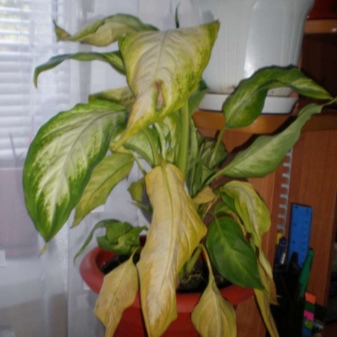

The opposite situation, when watering is insufficient, is no less dangerous for the plant. Overdrying the soil also causes yellow foliage and ultimately leads to the death of the flower. Do not let the earth dry out, water the flower as needed - when the earth dries out, 2-3 centimeters deep.
Another common mistake of novice florists is using hard water to moisten the earth, this often leads to chlorosis of the leaves - they first turn pale, and then turn yellow and begin to fall off.
To avoid such an unpleasant phenomenon, a green pet should be irrigated exclusively with spring or settled water, and also periodically dissolve iron chelate in it.

Soil and fertilizers
If the lower leaves of Dieffenbachia began to turn yellow, then the reason in most cases lies in the wrong choice of substrate and the lack of necessary dressings. This tropical plant prefers breathable earths with low acidity. Dieffenbachia responds well to humic acids, but if the soil is selected incorrectly, then the root system will not be able to cope with providing the leaves with nutrients. Dieffenbachia immediately responds to this by changing the color of its leaves, they begin to turn yellow, in addition, the flower slows down in development. Young growth, as a rule, is weakened and underdeveloped.
With a shortage of potassium, as well as nitrogen and phosphorus in the ground, the uppermost leaves of a green pet turn yellow. If you do not pay attention to this signal in a timely manner and do not make the necessary vitamin and mineral supplements, then all other leaves turn yellow rather quickly, the flower weakens and stops growing.
However, an excess of fertilizer can also harm the flower. So, yellowing of foliage often becomes a consequence of an excess of nitrogen - in this case, it changes color unevenly.
It is optimal to use ready-made complex preparations of the potassium-magnesium group of elements for plant fertilization.
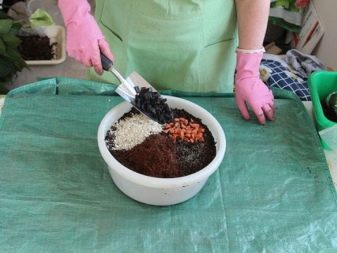
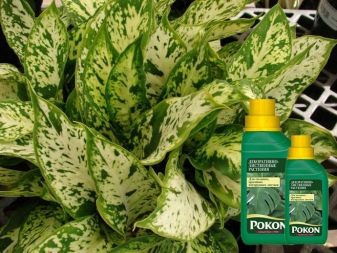
Temperature
Born in the tropics, Dieffenbachia loves warmth for full growth and development, the flower requires a temperature of 20-25 degrees both in winter and in summer... The flower can survive a simultaneous decrease in temperature to 10-15 degrees, but the result of such stress will be yellowing and further falling off of all lower leaves.
But keep in mind that dieffenbachia will not survive frequent temperature fluctuations - the appearance of spots on the edge of the leaves and their subsequent drying out can indicate a problem. This phenomenon is well known to experienced flower growers as necrosis, and is quite dangerous for the plant.

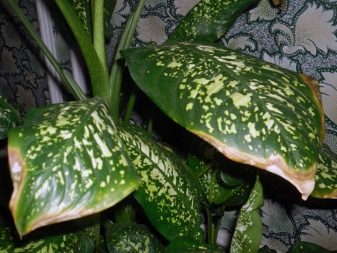
Pests
Like any other indoor flowers, dieffenbachia very often becomes the object of pest attacks. Most often it is affected by the scabbard, aphids, and mealybugs, but the most serious damage is caused by the spider mite. The listed insects parasitize on green foliage, completely suck out vital juices from it and deplete the plant, which inevitably leads to its death. The yellowing of the leaves becomes a signal of the invasion of "uninvited guests".
In this situation, it is necessary to carefully examine the leaf plates and all green stems - most likely, you will notice accumulations of pests on the back side. Aphids and scale insects should be washed off with a solution of laundry soap, and then the flower should be treated with special preparations. It is much more difficult to get rid of the tick, the leaves affected by it cannot be reanimated, so they need to be cut and burned, after which all the remaining parts of dieffenbachia should be thoroughly rinsed under a warm shower, having previously covered the substrate with plastic wrap.
If these measures are not enough, it is necessary to re-treat and supplement with spraying with special preparations. Solutions "Actellik" or "Fitoverm" have good efficiency.



Common diseases
Fungal, bacterial, and viral infections of the plant become one of the most common factors in leaf yellowing. Usually they are quite difficult to determine, therefore we will dwell on the description of the most dangerous ones in more detail.
Fungal
Fungal pathologies include the following ailments.
- Anthracnose. This disease can be identified by the appearance on the edge of the leaves of a large accumulation of large dark brown, brown and black spots with a pronounced yellowish edging. Over time, the leaf completely withers and falls off.
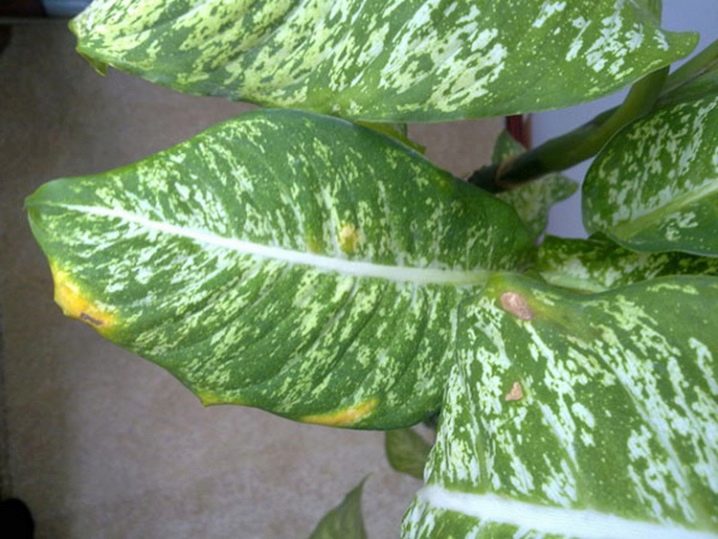
- Root rot. It is difficult to notice such a disease, since first of all it is manifested by the appearance of dark spots on the root collar buried in the ground. As the pathology develops, the leaves begin to turn yellow and fall off, which leads to the imminent death of the entire flower.

- Spotting. In this situation, small brown spots with a pronounced orange border can be seen on the foliage, over time they increase in size and soon cover the entire leaf plate.

Fungal diseases usually spread through damaged leaves and moisture. In order to avoid such infections, special attention must be paid to preventive measures:
- using a suitable substrate;
- compliance with irrigation and thermal conditions.
It is possible to cure fungal infections in the early stages - for this, all damaged parts of the plant must be removed, the flower must be treated with systemic fungicides and placed in new soil, it is also advisable to change the pot or disinfect the old one.

Bacterial
The main ailment is bacteriosis. With it, the leaves turn yellow, watery spots with pronounced edges appear on them. Over time, they begin to turn brown and change tone to brown. Unfortunately, this plant cannot be saved - there are currently no methods of treating bacteriosis.
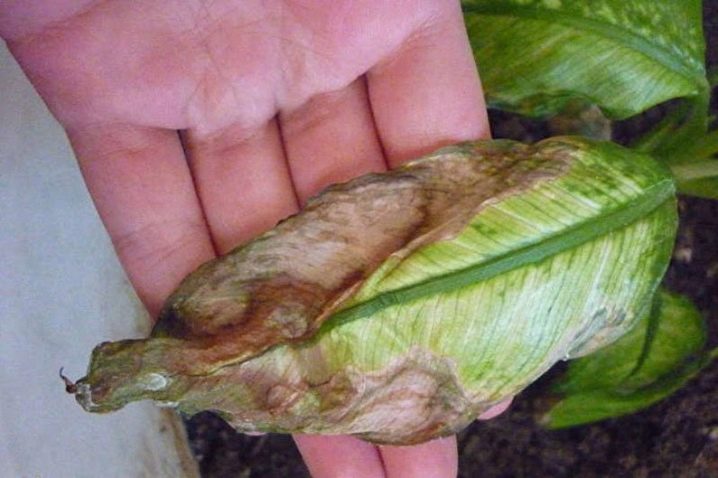
Viral
Usually, the leaves change color with such a dangerous viral disease as bronze. First, round yellowish spots appear on the leaf plates, then the affected areas die off, but the leaves themselves remain on the branches. The plant pauses in development, while viruses are quickly transmitted from a diseased dieffenbachia to neighboring indoor flowers. Viruses cannot be cured - the infected plant must be destroyed.

In conclusion, it should be noted that yellowing of the foliage does not always indicate a serious problem. If single lower leaves dry and the phenomenon does not spread further, this means that the natural aging process of Dieffenbachia is taking place and there is no need to worry about the fate of your green pet.
For information on why dieffenbachia turns yellow, see the next video.



























The comment was sent successfully.